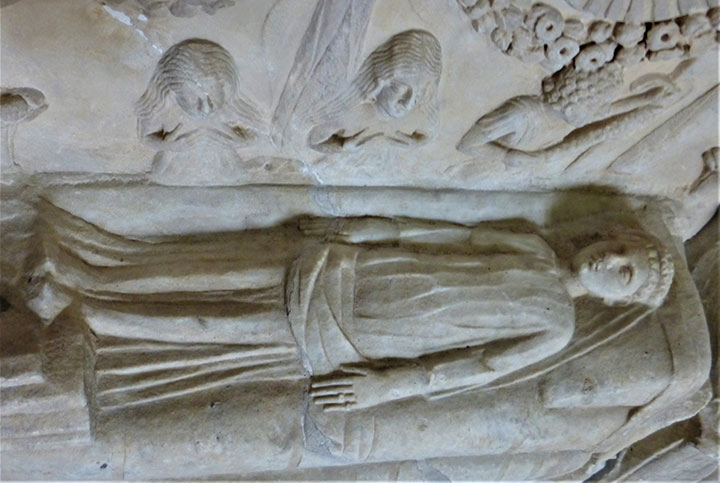Retrieving and Reuniting Roman Gypsum Burials in the Yorkshire Museum
The Yorkshire Museum in York has in its collections 16 Roman gypsum burial casts created from the ancient Roman practice of pouring liquid gypsum or plaster over the corpses of adults and children in stone or lead coffins before deposition in the ground.

Image credit: Maureen Carroll. The image shows a relief of ca. AD 100, from the tomb of the Haterii in Rome, depicting the deceased woman lying in state in her home, fully clothed,before burial. This is how the deceased were put in the sarcophagi we are investigating: fully clothed (and probably shrouded).
The decomposed flesh and tissues have left a negative void in the (now) hardened gypsum that preserves the contours of the bodies as well as the detailed imprint of shrouds, clothing, and footwear. The origin and meaning of this fascinating mortuary practice are yet to be determined. Most of the York coffins and casts were excavated in the late 19th-century building boom, the casts often becoming separated from the human remains and grave goods that were deposited in the coffins.
The Department of Archaeology at the University of York, York Museums Trust, and Heritage360 are working together to unite and make sense of disparate information sources in order to reconnect the excavated body casts with their skeletal remains and coffin contents and to understand the original Roman burial contexts.
Specialists at Heritage360 will conduct 3D scanning of the casts, providing very specific details of the placement of the dead, their clothing, and the objects with which they were buried. The process will afford unparalleled insight into this poorly understood Roman practice and allow us to recognise a moment from the past that is frozen in time.
This programme of knowledge exchange is funded by Internally Distributed Funding (IDF) of the University of York.